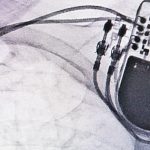The U.S. Food and Drug Administration (FDA) plays a crucial role in ensuring the safety and effectiveness of medical devices, including those designed to address cardiovascular health. Given the critical nature of these devices in treating and managing heart conditions, stringent regulatory oversight is necessary. Here’s an overview of the FDA’s role and key regulations governing cardiac devices.
FDA-Approved Devices
The FDA rigorously evaluates cardiac devices before they can market them to the public. This process ensures that each device is safe for use and effective in treating cardiovascular diseases and related conditions. Below are some examples of cardiac devices that require FDA approval:
- Automated External Defibrillators (AEDs):
- AEDs are portable devices commonly found in public spaces like airports, schools, and sports venues. These devices restore normal heart rhythm during a cardiac arrest by delivering an electric shock.
- Cardiac Ablation Catheters:
- These thin, flexible tubes are used in procedures to treat abnormal heart rhythms (arrhythmias). The catheters work by modifying specific areas of heart tissue to correct irregular electrical impulses.
- Cardiovascular Angioplasty Devices:
- Used in procedures to open narrowed or blocked blood vessels, these devices help improve blood flow and treat conditions such as coronary artery disease. They often involve the use of a balloon catheter to dilate the vessel.
- Cardiac Pacemakers:
- Implantable devices that monitor and regulate slow heartbeats, ensuring that the heart maintains an appropriate rhythm. Pacemakers are crucial for patients with bradycardia (slow heart rate).
- Implantable Cardioverter Defibrillators (ICDs):
- Similar to pacemakers, ICDs are implanted devices that monitor heart rhythms. However, ICDs deliver an electric shock if they detect a dangerous rhythm, such as ventricular tachycardia or ventricular fibrillation.
- Prosthetic Heart Valves:
- These devices replace diseased or dysfunctional heart valves, ensuring proper blood flow through the heart. Prosthetic valves can be mechanical or made from biological tissue.
Electrical Activity Monitoring
The FDA also regulates devices that monitor and affect the heart’s electrical activity. This category includes cardiac mapping systems, ablation catheters, pacemakers, and defibrillators. These devices play a vital role in diagnosing and treating various cardiac conditions by providing detailed information about the heart’s electrical function and enabling precise interventions.
FDA Regulatory Pathways
The FDA categorizes medical devices into three classes based on the level of control necessary to ensure safety and effectiveness:
- Class I:
- General controls apply. These devices have the least regulatory control and are considered low risk. Examples include stethoscopes and tongue depressors.
- Class II:
- General and special controls apply. These devices require more regulatory oversight due to moderate risk. Special controls may include performance standards, post-market surveillance, and patient registries. AEDs and some diagnostic equipment fall into this category.
- Class III:
- Premarket approval (PMA) is required. These devices are high risk and support or sustain human life or are of substantial importance in preventing impairment of human health. Examples include ICDs and heart valves.
Premarket Approval (PMA) Process
For Class III devices, the PMA process is the most stringent type of device marketing application required by the FDA. It involves:
- Scientific Evidence: Manufacturers must provide valid scientific evidence demonstrating the device’s safety and effectiveness.
- Clinical Trials: These may be necessary to gather sufficient evidence.
- Manufacturing Practices: Compliance with Good Manufacturing Practices (GMP) is mandatory to ensure quality.
The FDA’s rigorous evaluation and regulatory processes are essential for ensuring the safety and effectiveness of cardiac devices. By adhering to these regulations, manufacturers can provide reliable and life-saving devices to patients with cardiovascular conditions. For healthcare providers and patients, understanding these regulations helps in making informed decisions about the use of cardiac devices.
By staying updated on FDA regulations and approvals, professionals in the cardiac device industry can better navigate the complexities of bringing new and innovative treatments to market, ultimately improving patient care and outcomes.






